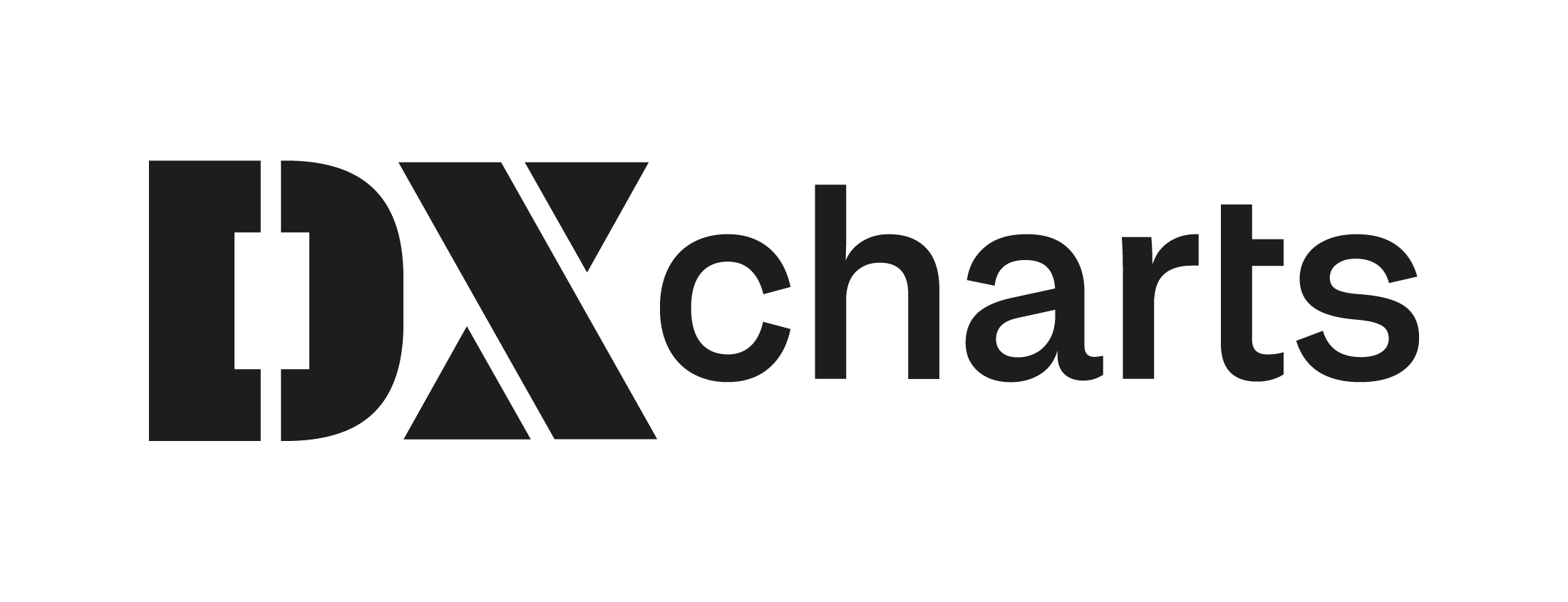- DarkLight
Version 4.6.0
- DarkLight
Release date: Apr 19, 2022
Trend chart
We have added a new chart type - Trend. The Trend chart is similar to the Candle chart but with different coloring patterns. The candles are colored bullish or bearish depending on the opet and close values of the current and two adjacent aggregation periods. For details, see Trend chart.
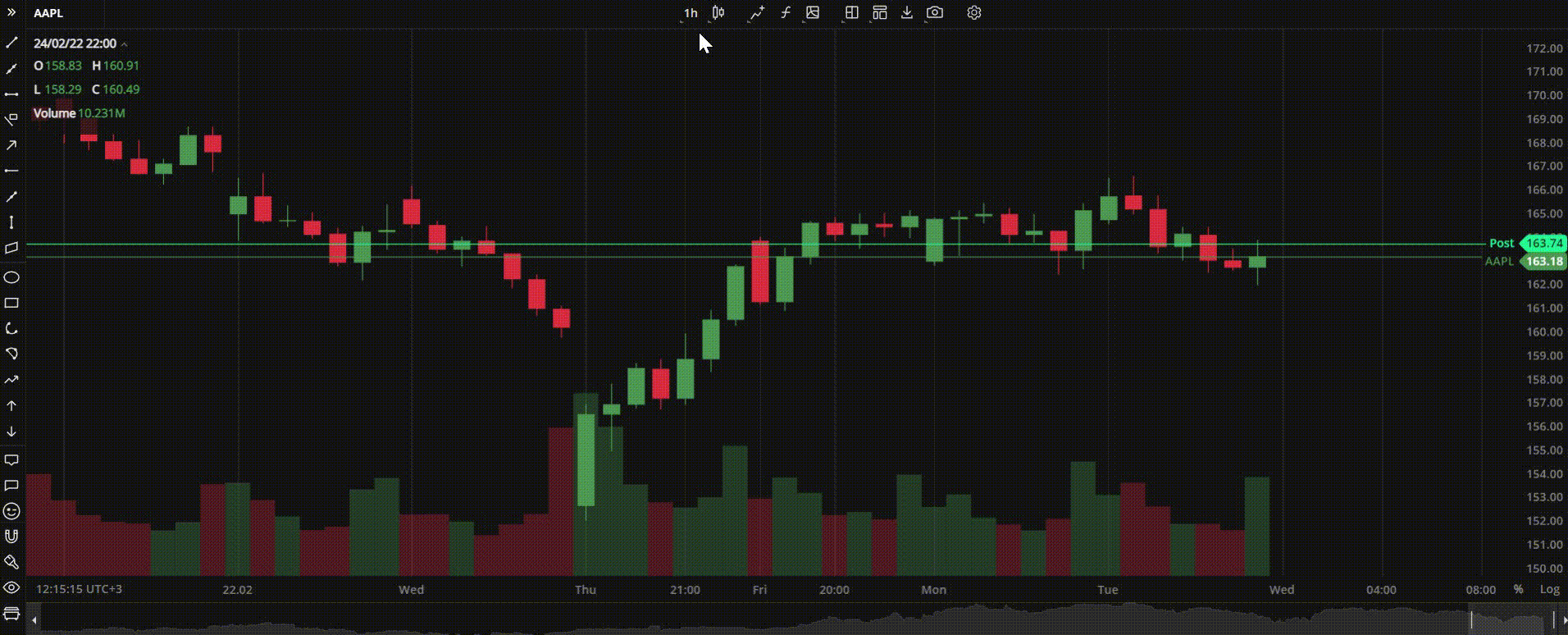 Trend chart
Trend chart
New studies and dxScript improvement
We have added 14 new technical indicators. Now, you can apply even more advanced mathematics to your technical analysis and spot trends as they emerge. Traders who prefer to write their own indicators using our dxScript language, now able to specify the plot type and color direcly in the code when editing an indicator.
The new studies (indicators) in our toolbox are:
- Advance/Decline. A cumulative indicator that plots the difference between the daily number of advancing and declining units. It can be used to confirm a price trend and alert a trader to the possibility of a trend reversal.
- Average Directional Index. This indicator is used to measure the strength or weakness of a trend over time. This directional index study is derived from smoothed averages of the difference between +DI (Plus Directional Indicator) and -DI (Minus Directional Indicator).
- Balance of Power. This study uses the price to measure buying and selling pressure by showing how much the price has changed.
- Bollinger Bands %B. This indicator is used together with the main Bollinger Bands study and shows where the price is in relation to the bands.
- Bollinger Bandwidth. This is another companion indicator to Bollinger Bands that shows the distance between the upper and lower bands.
- Chaikin Money Flow. This indicator, created by Marc Chaikin, shows the distribution and accumulation of an instrument. It works as follows: the closer the close to the high, the more accumulation.
- Commodity Channel Index. This is the oscillation study that shows the difference between the current price and the historical average price.
- EMA Cross. This is a variation of the EMA (Exponential Moving Average) indicator that shows the crosses between the 9-day and 26-day EMA.
- Fibonacci Bollinger Bands. This is a variation of the standard Bollinger Bands where the baseline is a simple moving average and each band is a Fibonacci ratio of the ATR (avwerage true range) from the baseline.
- Kaufman Moving Average Adaptive. This EMA-based indicator reacts to trends and volatility. When the line moves down, it indicates a downtrend; when the line moves up, it indicates an uptrend.
- Triple Exponential Average (TRIX). This is an indicator that helps visualize both trend and momentum. When used as an oscillator, it shows potential peaks and troughs; when used as a momentum indicator, it helps filter out irrelevant price spikes.
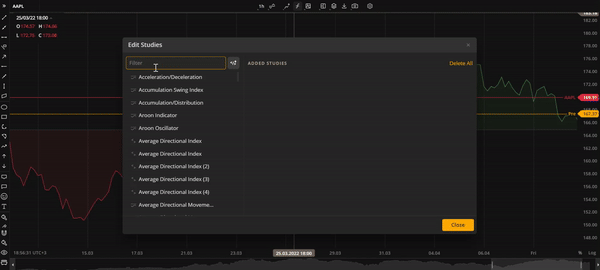 Average Directional Index and Balance of Power studies
Average Directional Index and Balance of Power studies.gif) Bollinger Band Width study
Bollinger Band Width study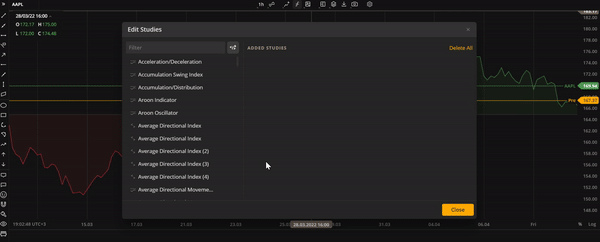 Fibonacci Bollinger Bands study
Fibonacci Bollinger Bands studyNew Fibonacci drawings
The list of drawings has been increased and now includes the following new items:
- Fibonacci Projection. A variant of the Fib Retracement drawing tool that allows you to identify swing high and swing low points on the chart.
- Fibonacci Time Zone. A series of vertical lines at Fib sequence intervals along the time axis. It helps identify potential areas of importance in terms of time, regardless of price.
- Fibonacci Time Ratio. Another time-based Fib drawing that helps predict potential trend reversals based on elapsed time.
- Fibonacci Time Extension. A time-based drawing similar to the Fibonacci extension. It highlights the time areas of importance where trends are expected to reverse.
- Fibonacci Spiral. A trend-based tool that draws a spiral on the chart using Fibonacci ratios. It is useful for predicting support and resistance areas.
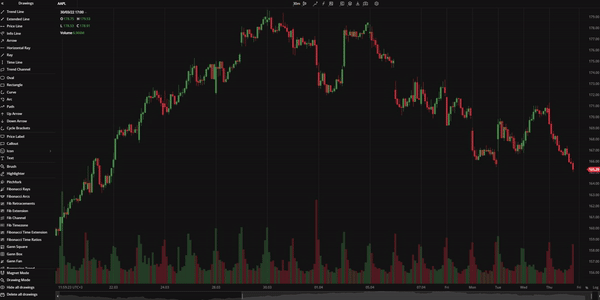 Time-based Fibonacci drawings
Time-based Fibonacci drawingsCandle improvements: Volume coloring
With this update, the volume bars at the bottom of a candle-type chart (candlestick, hollow candlestick, trend, Heikin Ashi) can have the same color as the candles. For all other chart types, the default color pattern (green and red) is used.
Candle improvements: Hide/Show wicks
Now you can hide or show candle whicks on the chart for better visibility. It can be used with all candle-based chart types. To show or hide candle wicks, click Candle Wick in Settings > General Settings.
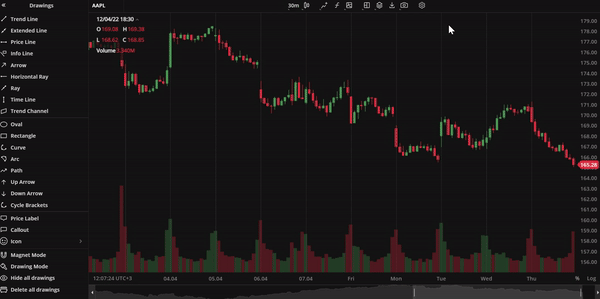 Candle wick
Candle wick
Indicators templates
Another minor but important improvement in our charts is the indicator templates. Now, you can save a list of frequently used studies (indicators) as a template and add them to a selected layout with a single click. For details, see Indicators templates.
